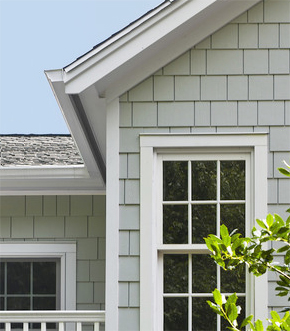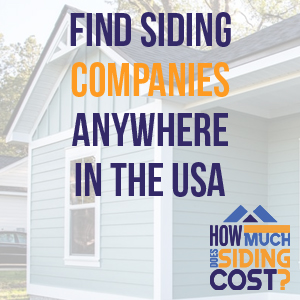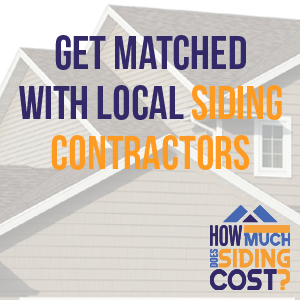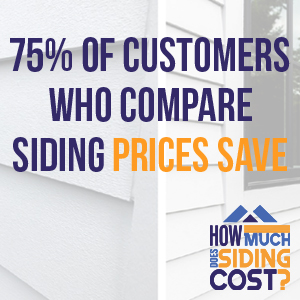
A Comprehensive Review of Siding Materials: Which is Best for Your Home?
The right siding can enhance the curb appeal, durability, and energy efficiency of your home. But with so many siding materials available, it can be difficult to determine which is best for your specific needs. In this blog, we’ll provide a comprehensive review of popular siding materials, outlining the pros and cons of each to help you make an informed decision.
Vinyl Siding
Vinyl siding is a popular choice for homeowners due to its affordability, low maintenance, and durability. Here are some pros and cons of vinyl siding:
Pros:
- Affordable: Vinyl siding is one of the most affordable siding options.
- Low maintenance: Vinyl siding is low maintenance, requiring only occasional cleaning with a pressure washer or hose.
- Durable: Vinyl siding is durable and can last up to 50 years with proper care.
- Energy efficient: Insulated vinyl siding can help reduce energy costs by improving insulation.
Cons:
- Limited color options: While vinyl siding comes in a variety of colors, the selection is not as extensive as other siding options.
- Not eco-friendly: Vinyl siding is not biodegradable and can contribute to environmental waste.
- Can crack or warp: Vinyl siding can crack or warp under extreme weather conditions, such as extreme heat or cold.
Fiber Cement Siding
Fiber cement siding is made of cement, sand, and cellulose fibers, providing a durable and attractive siding option for homeowners. Here are some pros and cons of fiber cement siding:
Pros:
- Durable: Fiber cement siding is resistant to rot, fire, termites, and other pests.
- Attractive: Fiber cement siding comes in a variety of colors and styles, providing an attractive option for homeowners.
- Low maintenance: Fiber cement siding is low maintenance, requiring only occasional cleaning with a pressure washer or hose.
- Energy efficient: Fiber cement siding can improve insulation, reducing energy costs.
Cons:
- Higher cost: Fiber cement siding is more expensive than vinyl siding, making it less affordable for some homeowners.
- Requires professional installation: Due to its weight and complexity, fiber cement siding requires professional installation.
- Can crack or warp: Fiber cement siding can crack or warp under extreme weather conditions, such as extreme heat or cold.

Wood Siding
Wood siding provides a classic, natural look for homes, making it a popular choice for homeowners who prefer a traditional aesthetic. Here are some pros and cons of wood siding:
Pros:
- Attractive: Wood siding provides a natural, attractive look for homes.
- Environmentally friendly: Wood siding is biodegradable and renewable, making it an environmentally friendly option.
- Durable: With proper care, wood siding can last for many years.
- Can be painted or stained: Wood siding can be painted or stained to match the homeowner’s desired look.
Cons:
- High maintenance: Wood siding requires regular maintenance, including painting, staining, and sealing to protect against weather damage and pests.
- Susceptible to pests: Wood siding is susceptible to termites and other pests, requiring regular inspections and treatments.
- Fire hazard: Wood siding can be a fire hazard, requiring additional precautions such as fire-resistant treatments.
Brick Siding
Brick siding provides a classic, durable option for homeowners, offering a wide variety of colors and patterns. Here are some pros and cons of brick siding:
Pros:
- Durable: Brick siding is resistant to fire, pests, and weather damage, providing a long-lasting option for homeowners.
- Low maintenance: Brick siding is low maintenance, requiring only occasional cleaning.
- Energy efficient: Brick siding can help improve insulation, reducing energy costs.
Cons:
- Higher cost: Brick siding is one of the most expensive siding options, making it less affordable for some homeowners.
- Requires professional installation: Due to its weight and complexity, brick siding requires professional installation.
- Limited design options: While brick siding comes in a variety of colors and patterns, the options are more limited than other siding materials.

Stucco Siding
Stucco siding is a popular choice for homes with a Mediterranean or Spanish-style design, providing an attractive and durable option for homeowners. Here are some pros and cons of stucco siding:
Pros:
- Attractive: Stucco siding provides a unique and attractive look for homes.
- Durable: Stucco siding is resistant to fire, pests, and weather damage, providing a long-lasting option for homeowners.
- Energy efficient: Stucco siding can help improve insulation, reducing energy costs.
Cons:
- Requires professional installation: Stucco siding requires professional installation, as it can be difficult to install properly.
- Limited design options: Stucco siding comes in a limited range of colors and textures, making it less versatile than other siding options.
- Can crack or chip: Stucco siding can crack or chip under extreme weather conditions or with improper installation.
Choosing the right siding material for your home requires careful consideration of your specific needs, budget, and design preferences. While each siding material offers its own unique benefits and drawbacks, it’s important to choose a material that aligns with your priorities, whether it’s affordability, durability, or environmental friendliness. By understanding the pros and cons of each siding material, you can make an informed decision that enhances the curb appeal, durability, and energy efficiency of your home.

The Cost of Replacing Siding
Replacing siding can be a significant investment for homeowners, with costs varying depending on the size of the home, choice of siding material, and labor costs. Here are some estimated price points for different siding materials, based on a per-square-foot basis:
- Vinyl Siding: Vinyl siding is one of the most affordable siding options, with costs ranging from $3 to $8 per square foot.
- Fiber Cement Siding: Fiber cement siding is more expensive than vinyl siding, with costs ranging from $4 to $10 per square foot.
- Wood Siding: Wood siding is typically more expensive than vinyl and fiber cement siding, with costs ranging from $6 to $12 per square foot.
- Brick Siding: Brick siding is one of the most expensive siding options, with costs ranging from $8 to $15 per square foot.
- Stucco Siding: Stucco siding costs can vary widely, depending on the complexity of the installation and choice of materials. Costs typically range from $6 to $12 per square foot.
It’s important to note that these price points are estimates and can vary depending on several factors, such as the size of the home, location, and choice of contractor. Labor costs can also vary widely, depending on the complexity of the installation and the experience of the contractor.
It’s recommended to get multiple quotes from reputable contractors before making a decision and to consider the long-term costs and benefits of each siding material. While vinyl siding may be more affordable upfront, it may require more maintenance and replacement over time, while brick siding may offer greater durability and energy efficiency, but at a higher cost. By weighing the costs and benefits of each siding material, homeowners can make an informed decision that meets their specific needs and budget.
